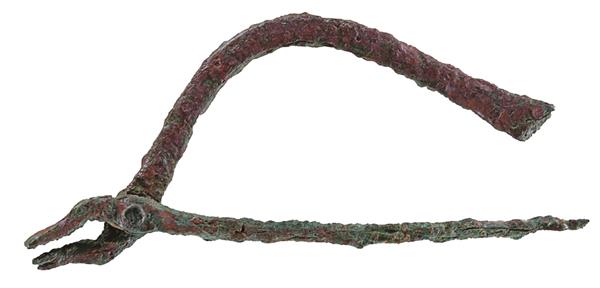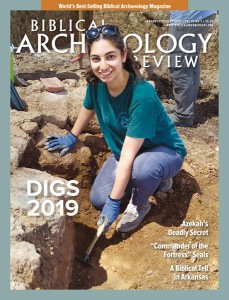
A. Crossbow
B. Scissors
C. Fibula
D. Pliers
E. Amulet
Answer: C. Fibula
This fibula, or garment fastener, comes from the recent excavations at Hurvat ‘Eres, a small fourth-century B.C.E. fortress located in the Judean Hills west of Jerusalem.1 It was uncovered in the fortress, where it had lain on a beaten-earth floor, sealed by a thick layer of fallen debris.
The fibula is made of bronze and is currently 3.5 inches long and 1.5 inches high. A good example of fibulae with a false spring, it is made of two components—an arched bow and straight pin—connected by a rivet. The missing end section of the bow once featured a catch to hook in the pin. Interestingly, this particular piece represents a north Italian type of fibula that originated in the Balkans, with parallels known from sites in northern Italy that are similarly dated to the fourth century B.C.E.
Working on the safety pin principle, fibulae like this one were used in antiquity to fasten pieces of outerwear, in which they replaced earlier straight pins. The practice of fastening tunics and cloaks with fibulae especially expanded in the Roman period. Similar fasteners are well attested throughout the Roman Empire. Fibulae’s different shapes and varying workmanship can inform archaeologists on the place and date of their origin.
Already a library member? Log in here.
Institution user? Log in with your IP address.

